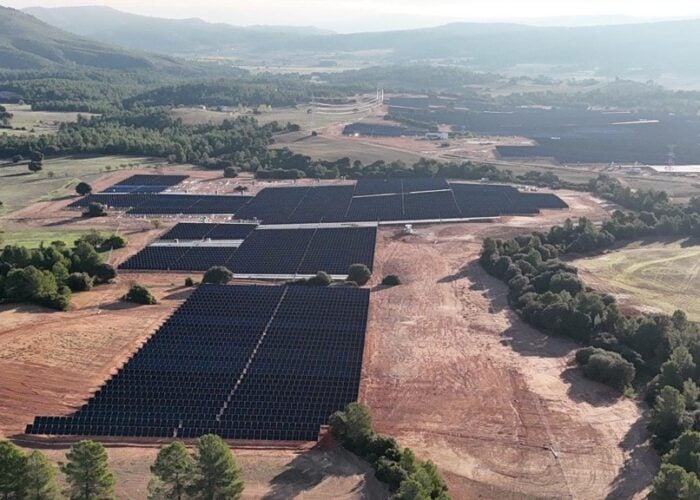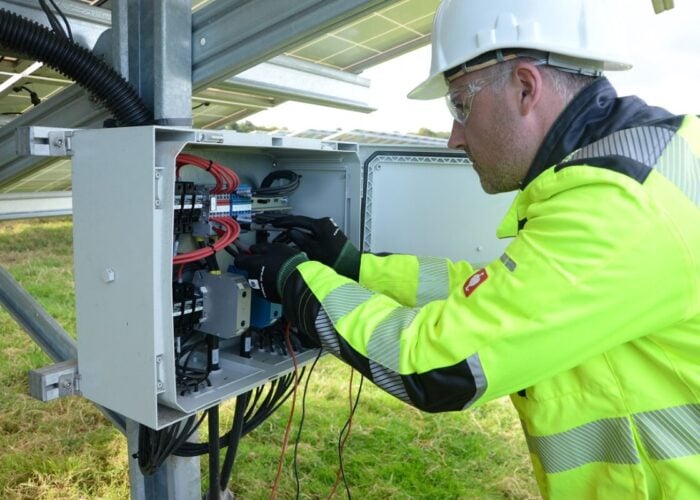
In 2024, the European solar market saw module prices drop month after month, while still adding a record volume of solar capacity. This price drop in solar equipment could drive demand up across Europe in 2025, and spur growth in several emerging markets, such as Poland, Hungary and Greece. PV Tech spoke to Agata Krawiec-Rokita, CEO of solar wholesaler sun.store, about the 2024 performance, and 2025 outlook, of European solar.
PV Tech: In both your own business and the wider market, what were the biggest highlights or milestones of 2024 and why?
Try Premium for just $1
- Full premium access for the first month at only $1
- Converts to an annual rate after 30 days unless cancelled
- Cancel anytime during the trial period
Premium Benefits
- Expert industry analysis and interviews
- Digital access to PV Tech Power journal
- Exclusive event discounts
Or get the full Premium subscription right away
Or continue reading this article for free
Agata Krawiec-Rokita: In 2024, we achieved several significant milestones: we surpassed 20,000 registered users, reached over 500 MW of equipment sold, and marked 12 consecutive months of GMV growth (turnover on the platform). This success is particularly notable given the challenging market conditions—while equipment prices dropped significantly throughout the year, achieving growth in monetary value under these circumstances highlights the increasing adoption of our platform and its strong market position.
The most remarkable highlight for the solar industry remains the record-breaking total capacity added globally. According to the International Energy Agency (IEA), 61GW of new capacity was installed in 2024 in Europe, with the EU alone contributing 55.8GW. This growth underscores the ongoing momentum towards renewable energy adoption across the region and globally.
Again, both in your own business and wider industry, what were the biggest hurdles or challenges of 2024 and why?
The most significant hurdle, both for sun.store and the solar industry at large, lies within the supply chain. We’ve experienced record-low and continuously dropping equipment prices—our PV Index indicates that module prices have declined month over month since May 2024. While these price drops benefit demand, they have strained manufacturers and distributors.
On the demand side, challenges remain, including grid connectivity issues, negative energy prices caused by spikes in solar production and competition from other affordable energy sources. Additionally, constantly shifting local support programs have created uncertainty, complicating investment and project planning.
Looking ahead to 2025, what do you foresee as the biggest opportunities, both for your own business and the wider market and why?
For 2025, I see several promising opportunities that align with the trends observed in 2024:
- Increased affordability of equipment. Continued price reductions, particularly in energy storage systems, will drive demand by enabling greater self-consumption and grid resilience. This will significantly enhance the value of decentralised energy systems.
- EU Renewable Energy Targets. The push for rapid adoption to meet EU targets will accelerate installations and innovation across the region.
- Financing innovations. New financing mechanisms, including crowdfunding, green bonds, and environmental, social and governance (ESG) investments, are creating accessible pathways for solar projects to secure funding.
- Corporate demand for solar PPAs. Rising interest from corporations to secure renewable energy through long-term power purchase agreements (PPAs) will further stimulate growth.
- Emerging markets. Opportunities in Eastern Europe (Poland, Hungary, and the Balkans) and Southern Europe (Italy and Greece) continue to grow as these regions prioritise renewable energy transitions.
What do you foresee as the biggest challenges on the horizon in 2025 for your business and the wider market and why?
The key challenges for 2025 largely reflect those of the current year, with additional pressures building:
- Supply chain vulnerabilities. Manufacturers and distributors face ongoing cash flow pressures due to declining prices and market oversupply. This situation will likely drive consolidation across the industry, with only the most resilient and well-capitalised players remaining competitive.
- Grid constraints. Aging grid infrastructure, the variability of solar energy, and the urgent need for energy storage and backup solutions continue to pose challenges. Slow permitting processes further exacerbate these issues.
- Inconsistent policies. Policy variability across EU member states creates uncertainty for businesses and slows down progress in certain regions.
- Higher interest rates. Rising borrowing costs could impact the profitability of projects and investment decisions, particularly for smaller developers and stakeholders.
What would be the single most important thing that could happen in 2025 that would advance either your own business or the wider market, or both?
I firmly believe that the entire solar industry will continue to progress as we see increasing capacity being installed year after year. In this context, a significant boost in demand will play the most critical role in driving further growth and unlocking the full potential of renewable energy solutions.






